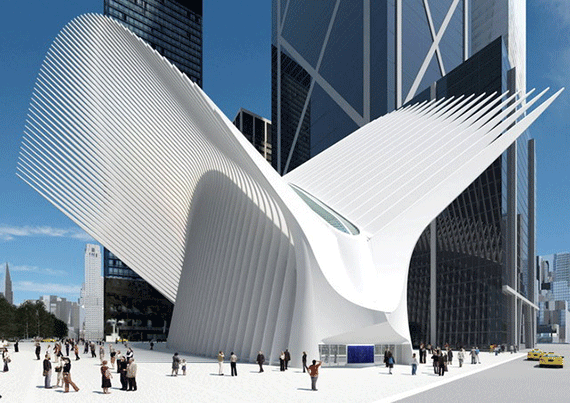Trending
WTC transit hub a “glorified PATH station” at an “unconscionable” cost: review
New York Times architecture critic has mostly harsh words for Santiago Calatrava's downtown creation

The World Trade Center Transportation Hub finally opened Thursday, and reviews have begun to pour in.
The new Santiago Calatrava-designed transit center is not very practical, grossly overpriced, and poorly suited to its surroundings, wrote Michael Kimmelman, the New York Times’ architecture critic, in a column.
The long-delayed hub’s $4 billion price tag – up from an initial estimate of $2.2 billion – is “head-slapping” and “unconscionable,” the critic wrote.
The structure, while boasting grand, curved, steel-ribbed walls, vast open space and “bright, inviting train platforms, is, for practical purposes, little more than the “18th-busiest subway stop in New York” plus a “glorified PATH station,” Kimmelman wrote.
The grand, gleaming-white center also fits poorly into its Downtown environment, according to the critic.
“In its scale, monotony of materials and color, preening formalism and disregard for the gritty urban fabric,” Kimmelman wrote, “the hub is the sort of object-building that might seem at home on the Washington Mall.”
The 365,000-square-foot center, known as the Oculus, has underground passages connecting 11 subway lines, the PATH train and several bus and ferry lines. Westfield Group will operate a $1.4 billion shopping center at the facility, with tenants that include Apple, Daniel Boulud, Eataly and others. The retail has been fully leased and is scheduled to open this spring.
Kimmelman’s final assesment of the project was grim:
“If the takeaway lesson from this project is that architects need a free pass, a vain, submissive client and an open checkbook to create a public spectacle,” he wrote “then the hub is a disaster for architecture and for cities.” [NYT] – Ariel Stulberg




